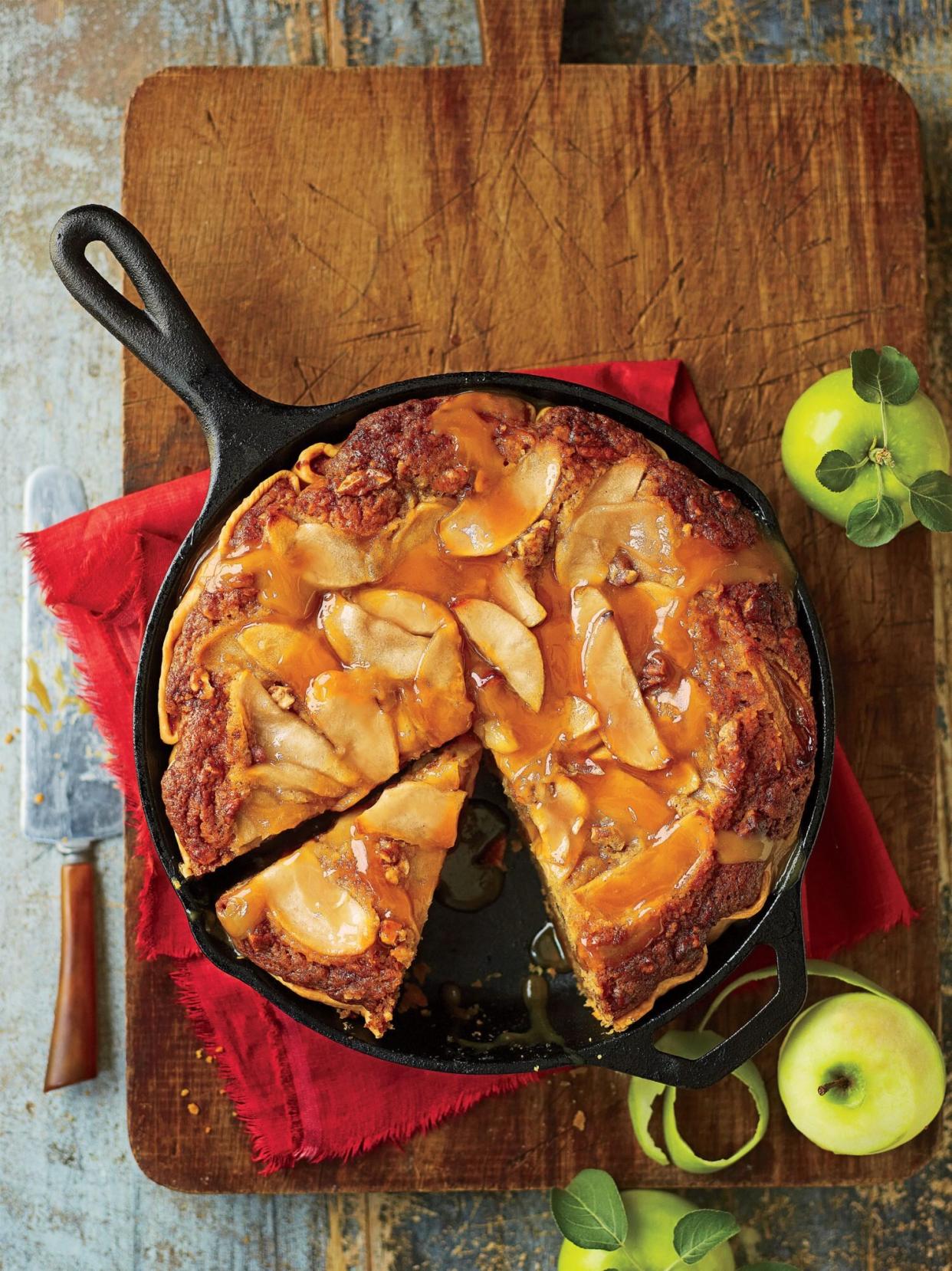How To Bake a Pie in a Cast Iron Skillet

Photo: Hector Sanchez
TABLE OF CONTENTS
On This Page
In Praise of Cast Iron
Tips for Pie in Cast Iron
Why Try Pie in Cast Iron?
Cast Iron Pie Recipes to Try
Around the holidays patience and pie plates run short. While solutions for politically controversial uncles are scarce, you can always cling to cast iron skillets as your rock in a chaotic kitchen. From a Brussels sprouts dish to gravy and even that sweet potato casserole, there is almost nothing you can't serve in cast iron, and that includes pie. In fact, once you try it, you may never bake in anything else again.
In Praise of Cast Iron
Before we approach the technique portion of our conversation, let us, in regards to pie, praise a famous pan. No longer will you have to disturb your fragile crust from damage as you cling to the sides of a thin glass pie plate with two oven mitts like a clumsy, frazzled bear; nor will you have to worry about your crust becoming soft and dense on the bottom, brown and dry on top.
Reclaim the 35 minutes you would otherwise spend fussing with fluted edges or frantically collecting drippings from burning on the bottom of the oven forever to remain until the next homeowner moves in. A cast iron skillet fixes all of these issue and more. Let's move on to fully living in the enlightenment of cast iron pie baking.
Tips for Pie in Cast Iron
When making the crust, choose a recipe that makes enough for a deep dish pie. Divide it into 60:40 ratio rather than two equal discs.
When you place the crust inside the skillet, use the slightly bigger crust so that the dough covers the deeper sides of the skillet.
If you're baking a fruit pie, like apple for example, let us liberate you even more fully: You don't even need a bottom crust. Yes, maybe that makes it more a cobbler situation, but relax. It's still pie shaped.
Whether you're doing a fancy lattice or a basic top crust, keep the edges inside the pan rather than coming around the sides like you would with a pie plate.
For a flaky crust when baking, put the cast iron skillet on the bottom shelf of the oven that way the pan will absorb and conduct the heat resulting in a crisp crust.
Why Try Pie in Cast Iron?
A cast iron skillet has the magical ability to both retain heat and conduct it evenly. When cooking with glass, there are bound to be hot spots. Your crust will come out baked evenly with cast iron. Your pie wedges will also be gratifyingly deep. The cast iron skillet comes in at a 2-inch depth while a glass pie plate are just over an inch deep. Your deep dish pie will reign supreme at the holiday table.
Cast Iron Pie Recipes to Try
Ready to embrace the path to pie in cast iron? Try these recipes for Thanksgiving or Christmas.
Don't wait until the holidays to make these desserts! Bring out the cast-iron skillet year round to make a delicious dinner party dessert or for picnics and summer parties.

